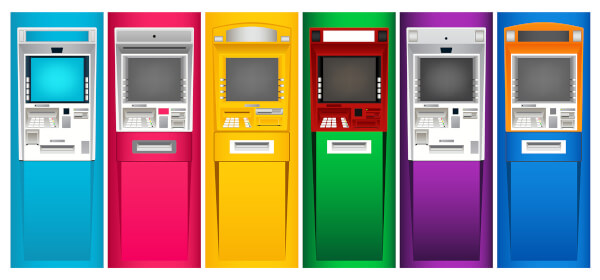Hays travel card review: features, fees and more
Read our Hays travel card review, covering exchange rates, limits, fees and benefits.

For many people who travel, or simply shop online, a credit or debit card is the most convenient payment option. You can use your Visa credit or debit card to buy goods and services anywhere in the world, withdraw cash from an ATM wherever you happen to be, and shop with merchants based overseas.
However, if you’re using your card to pay in a foreign currency, there may be costs you need to consider. It’s a smart idea to read your bank account’s small print and find out the Visa exchange rate to figure out exactly how much your purchase will cost you.
Let’s say, for example, that you have a Visa debit card linked to a pounds sterling (GBP) bank account. You’re taking your dream city break in Paris and spending in euros while you’re there. You won’t know until you get home what your holiday weekend has cost you — unless, of course, you know where to find the Visa exchange rate and relevant fee information.
Here’s all you need to get you started.
Before you get started, a word.
Banks and money transfer providers often give you a bad exchange rate to make extra profits.
Wise is different. Its smart new technology skips hefty international transfer fees by connecting local bank accounts all around the world. Which means you may be able to save a lot by using Wise rather than your bank when you send your money abroad.
Check out how to make your first transfer with Wise. And give it a try.
Oh, and while you’re at it, check out Wise’s borderless multi-currency account. Where you can manage, send, and spend dozens of currencies all from the same account. Depending on where you live, you may also be able to use the Wise debit Mastercard for your travels abroad.
Now, back to what you came here to read.
Here’s all you need to know about the exchange rate that will be applied to the transaction, when you use your Visa credit or debit card abroad, or if you use it to make purchases online from a merchant overseas.
You can check the Visa exchange rate using the Visa currency conversion calculator. It’s possible to look up historical exchange rates too, so you can check the details for a purchase you made when you were travelling, for example.
It’s good to know that there are different exchange rate calculators, depending on whether your credit or debit card was issued by Visa USA or Visa Europe. Both are available in the sources at the end of the article — just make sure you choose the correct one for your needs.
To use the exchange rate calculator from either Visa or Visa Europe, you’ll need the following information:
Just enter all the details, and the calculator will tell you the cost of the transaction in the currency of your card.
Whether your card was issued in Europe, the US, or elsewhere in the world, you need to understand a few details about the way the calculator works.
Firstly, the rate that Visa provides will correspond to the date you enter into the calculator. Exchange rates go up and down all the time. Where it gets tricky is that if you’re making an international purchase in a store today, it might not be processed immediately.
You might have noticed that sometimes credit and debit card payments appear on your bank statement a day or two after you actually made the purchase or withdrawal. If this happens, the exchange rate could change between the time of your transaction and when it was actually purchased. This means that Visa can only ever give you an indication of the exchange rate applied.
This is how Visa explains it:
> Rates apply to the date the transaction was processed by Visa; this may differ from the actual date of the transaction¹
Which means you need to make sure that the date you enter into the calculator is the date on which the transaction is processed. This means that you can only do this for purchases in the past — if you want to buy something or make an ATM withdrawal today, you have no way of being sure when it’ll be processed exactly.
Nonetheless, it’s helpful to know the indicative exchange rate used by Visa, so you can compare it with the a fair rate online. This is the only real exchange rate, and the best benchmark to make sure the Visa rate is fair. More on that in a moment.
Finally, to get an accurate cost from the calculator, you’ll also need to know if your bank adds a percentage fee for using your Visa abroad. This can be quite a cost — often around 2%-3%, but the Visa Europe calculator allows you to enter bank fees of up to a staggering 10%.²
Check out your account terms and conditions, or the fees and charges section on your online banking, to make sure you know the costs related to your Visa credit or debit card.
So now we know that the mid-market rate is the best benchmark to use to compare the exchange rate you get from Visa and check if it’s fair. You might well be asking yourself, what is a mid-market rate, then? Don’t worry. We’ve got you covered.
The mid-market rate is known by several other names, including the spot rate, the interbank rate, and the wholesale rate. It’s important because it’s the only real exchange rate — the one banks use to sell currency to each other on big global financial markets.
If you google your currency pair or use a reputable online currency converter, the mid-market rate is what you’ll be shown.
The bad news is that many banks and money transfer services don’t use the mid-market rate for currency conversions. Instead, they choose their own exchange rate, which they might call a day rate or a tourist rate. Unfortunately, the day rate offered by many providers is inflated, and doesn’t represent a good deal for the customer.
What often happens is that the bank or money transfer service takes the mid-market rate that they can get themselves from a third party, and adds their own margin on the top of it. They do this because they can then claim that they offer fee-free, or zero commission currency conversions. But that hides the true costs of the conversion from the customer.
There’s still a fee to pay, it’s just that it’s rolled into the marked up exchange rate. That’s not transparent, and often not particularly fair.
The only way to protect yourself against this is to get clued up on the mid-market rate. This rate moves up and down depending on a huge range of factors, but it’s easy enough to find the rate by Googling online. You can then compare the rate your card provider, bank, or money transfer service is offering you with the real exchange rate, to check it’s fair.
So now you know where to find the Visa exchange rate. However, if you get caught out by dynamic currency conversion (or DCC for short), the exchange rate used might not be the one Visa sets. And that’s likely to mean you get a pretty bad deal.
Here’s how Visa explains it:
Dynamic Currency Conversion (DCC) offers you a choice of paying in home currency when you use your card overseas. This service is offered by merchants and includes a service fee in the exchange rate used.³
DCC is where you’re asked if you’d like to pay for your transaction in your home currency instead of the local currency. If you say “Yes,” it’s the ATM provider, merchant, or an intermediary bank who decide the exchange rate which is used.
As Visa points out, DCC can leave you exposed to hidden fees and unnecessary costs, because a service fee is typically rolled into the exchange rate used to calculate your transaction cost.
The rate used isn’t transparent, because you only ever see the cost in your home currency — and that can mean that the markup is pretty high. All in all, you’re worse off — and the ATM provider or other intermediary makes a tidy profit.
As you saw above, banks often add other charges for using a Visa credit or debit card overseas. These might be different depending on whether you want to use your card in a shop or restaurant abroad or to withdraw cash from a foreign ATM. The charges vary quite widely and can include both fixed charges, and a percentage fee which is added to the transaction. Even if the costs don’t look too high, they can quickly mount up if you use your card abroad often.
Check out your bank’s terms and conditions online. The fees you need to look for are likely to be listed in a section about making international payments, or international cash withdrawals. Doing a bit of homework in advance can make sure you don’t run into any unexpected costs when you’re using your Visa credit or debit card abroad.
It’s worth taking the time to understand not only the Visa exchange rate but also any percentage or flat fees added by your bank. But above all, make sure you avoid DCC, so that you get the best possible deal on your Visa transaction.
Nobody wants to be ripped off, or pay more than they need to while they’re travelling. To understand exactly what you’ll be charged for using your Visa card overseas, you’ll need to figure out your home bank’s fees for international cash withdrawals and payments, and also understand the Visa exchange rate. Remember to compare the Visa exchange rate with the mid-market exchange rate, to make sure you’re getting the most for your money. And if you find that the deal on offer from your Visa credit or debit card provider isn’t great — then check out other options, like Wise.
This publication is provided for general information purposes only and is not intended to cover every aspect of the topics with which it deals. It is not intended to amount to advice on which you should rely. You must obtain professional or specialist advice before taking, or refraining from, any action on the basis of the content in this publication. The information in this publication does not constitute legal, tax or other professional advice from TransferWise Limited or its affiliates. Prior results do not guarantee a similar outcome. We make no representations, warranties or guarantees, whether express or implied, that the content in the publication is accurate, complete or up to date.
*Please see terms of use and product availability for your region or visit Wise fees and pricing for the most up to date pricing and fee information.
This publication is provided for general information purposes and does not constitute legal, tax or other professional advice from Wise Payments Limited or its subsidiaries and its affiliates, and it is not intended as a substitute for obtaining advice from a financial advisor or any other professional.
We make no representations, warranties or guarantees, whether expressed or implied, that the content in the publication is accurate, complete or up to date.

Read our Hays travel card review, covering exchange rates, limits, fees and benefits.

Read our TUI travel card review, covering exchange rates, limits, fees and benefits.

Should you pay with cash or card in Barbados? A handy guide including cash etiquette, Barbadian ATMs and using your UK card.

Read our guide on ATMs abroad including networks, locations and tips on how to avoid ATM fees abroad.

Read our guide to Edinburgh Airport ATMs, including locations, fees, withdrawal limits and helpful tips to save money when you land.

Should you pay with cash or card in Albania? A handy guide including cash etiquette, Albanian ATMs and using your UK card.